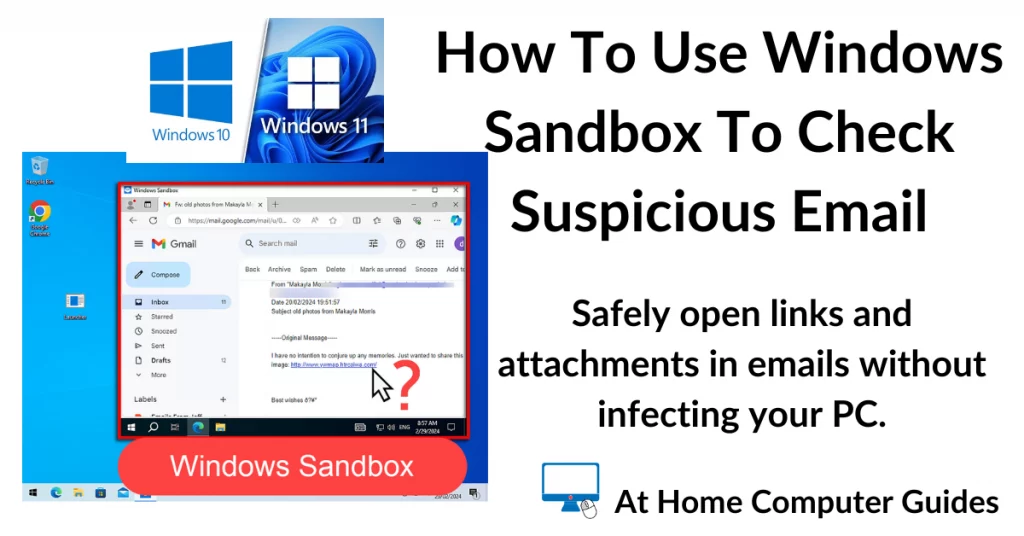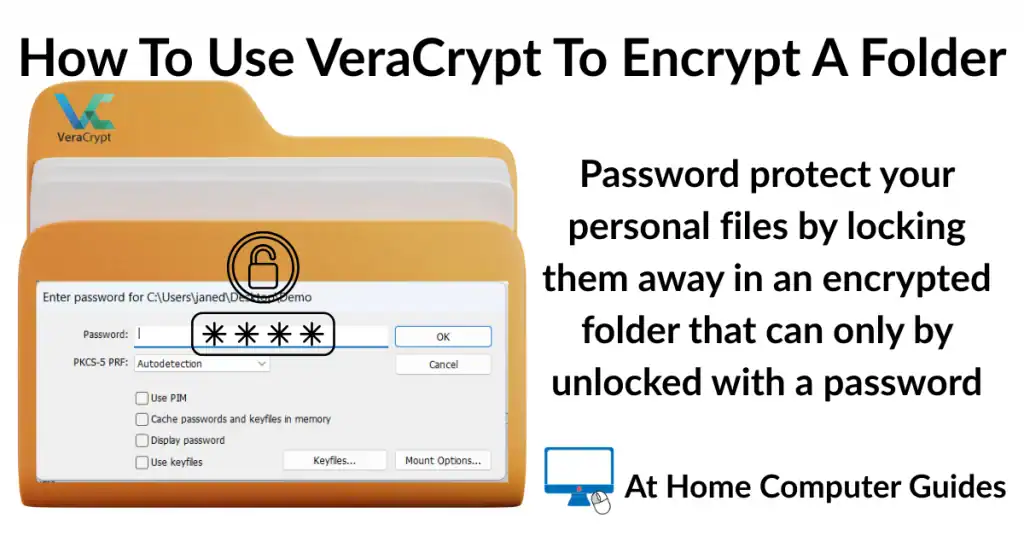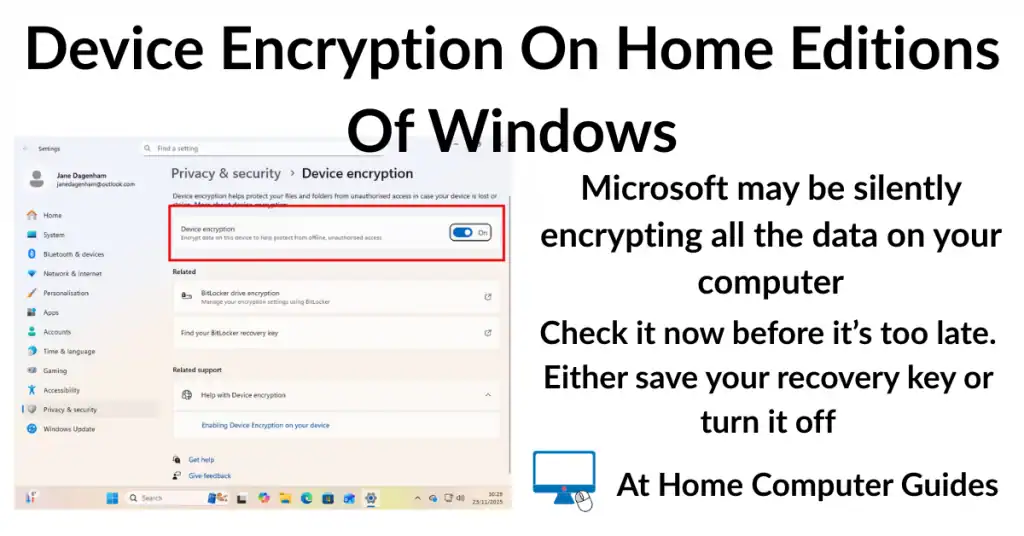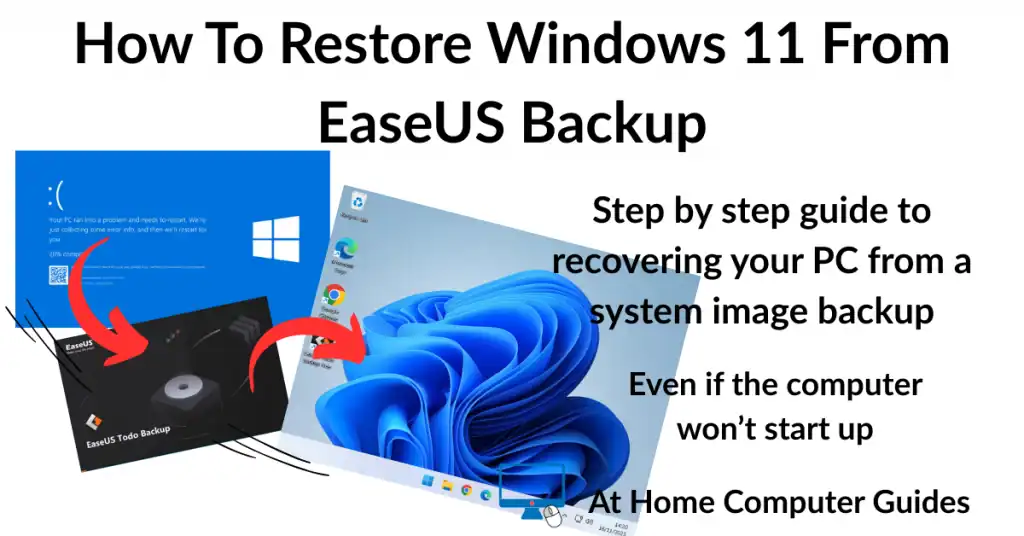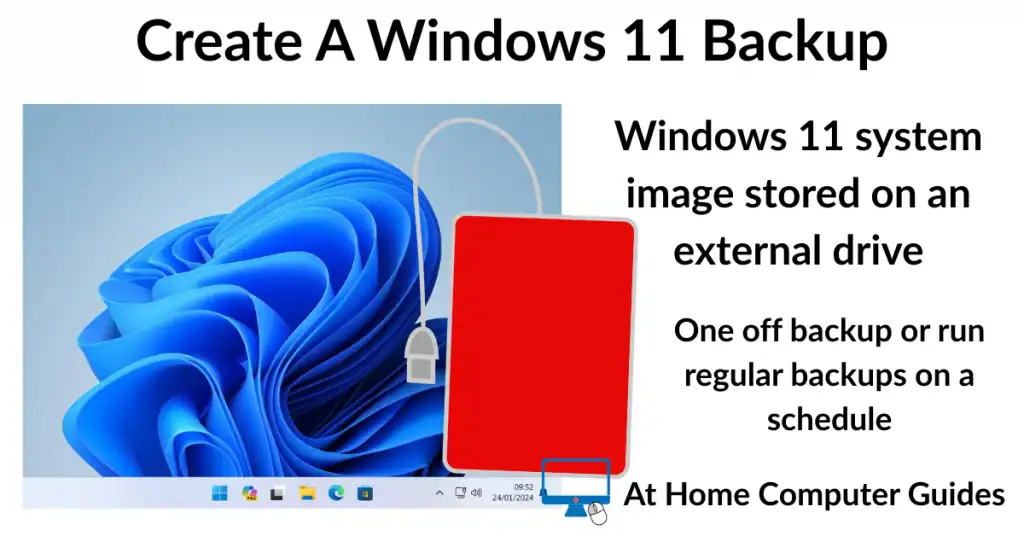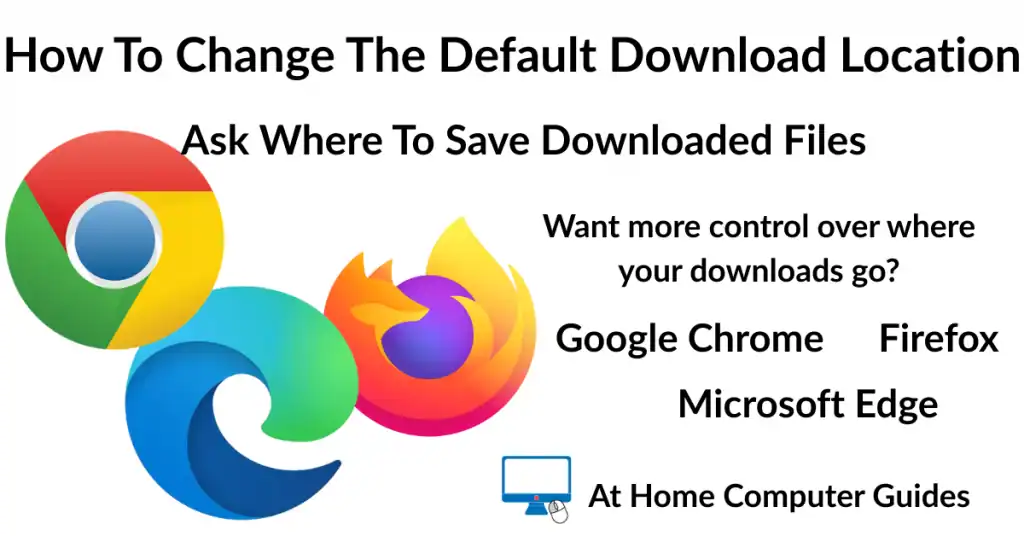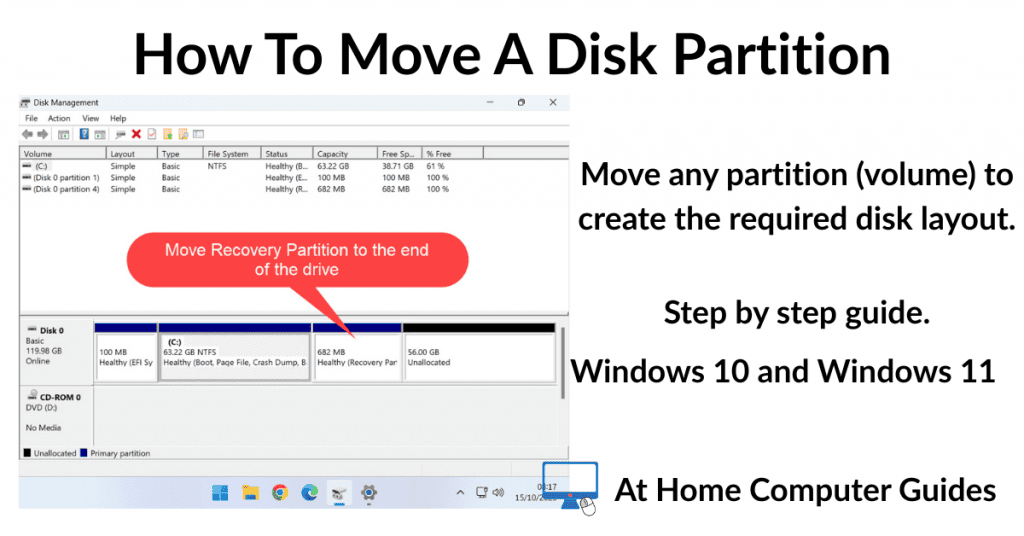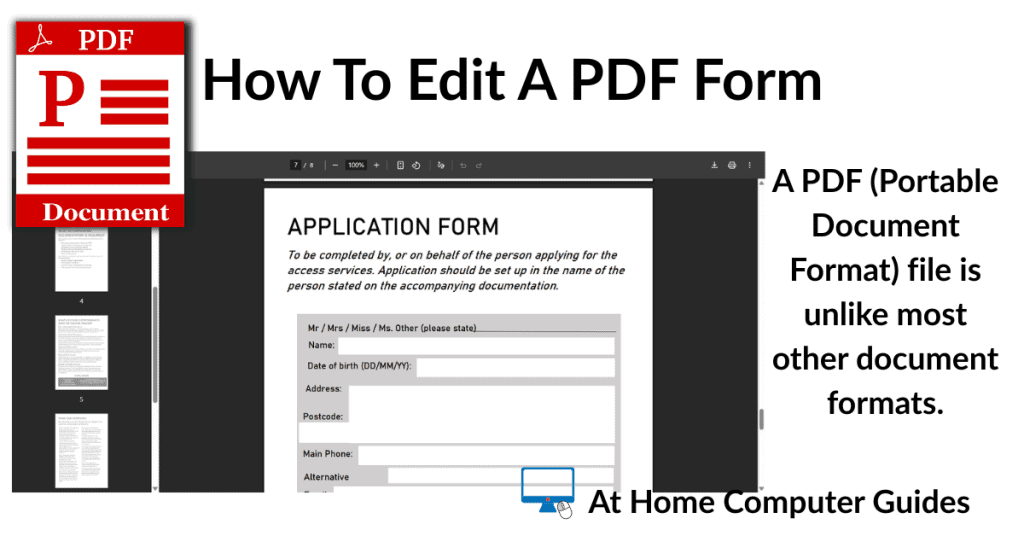Use the Windows Sandbox to open suspicious emails that you might receive.
We all know by now that you really shouldn’t be clicking on any links that are contained in emails. The same is true for opening attachments to emails. Don’t do it.
But every now and then an email will arrive that you’re curious about. Where does the link lead? What’s in the attachment? It happens to us all.
The problem is that you don’t know what sort of threat you’re exposing your computer to. What you need is a “safe way” of opening the link or attachment. A sandbox for email.
How To Open Suspicious Emails Safely Using Windows Sandbox.
Windows Sandbox is essentially a virtual machine. A self contained replica of your version of Windows.
It doesn’t have all the programs and apps that you’d normally expect to have with a full installation of Windows, but it does have a working version of the Microsoft Edge web browser. With Edge you get access to the Internet.
With the Windows Sandbox, just like a regular VM, it’s completely isolated from your host (real) computer. Whatever happens inside the sandbox can’t expand out onto your computer. It’s contained inside the sandbox.
And that makes it perfect for opening suspicious emails. Attachments and links in the emails are all sealed inside the sandbox.
As an example, take a look at this spam email. It’s the sort of suspicious message that many of you get everyday.
There’s a very short message designed to get you interested or curious and then a link to click on.
The problem is that you really have no idea where that link will lead.
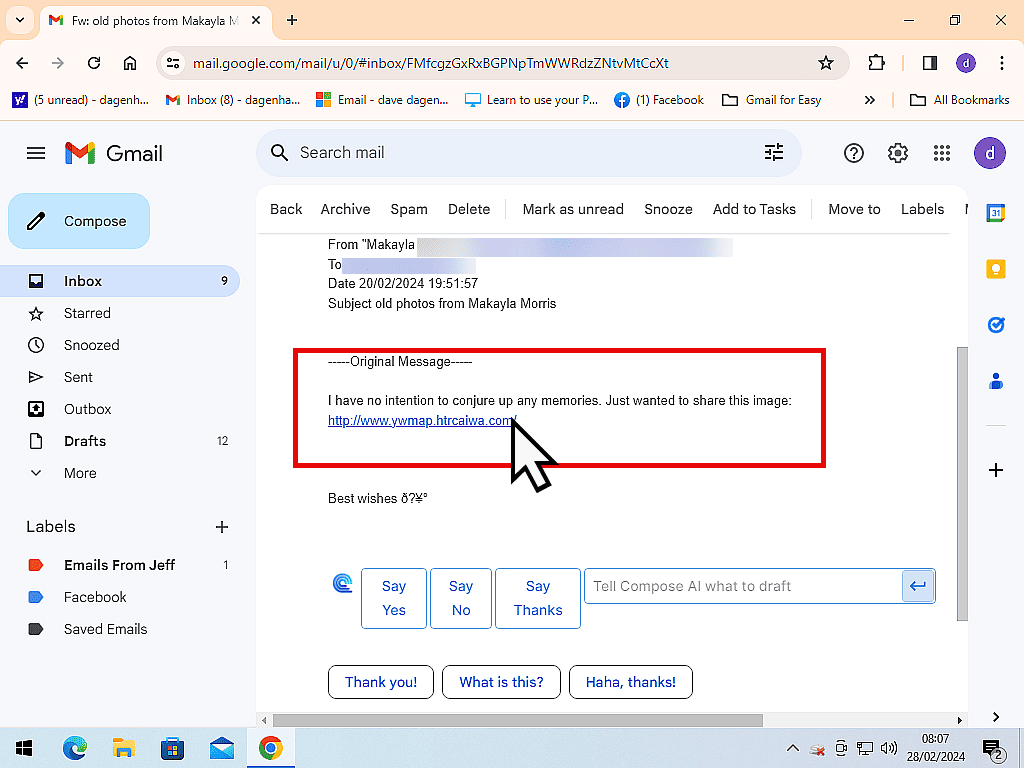
Links And Attachments In Emails.
Although this particular example of a suspicious email has a link, it could just as easily contain an attachment.
Opening links and attachments are the biggest threat to your PC security. They spread malware and lead to phishing websites.
Always open email attachments & links in a sandbox.
Open The Windows Sandbox.
To open a suspicious email safely you’ll need to open it inside a sandbox. Sandboxing email will allow you to click on the links, or open the attachments without putting your computer at risk.
Log out of your email service or close your email client.
Then launch the Windows Sandbox. It doesn’t take long to start up.
Once the Sandbox is ready to go, click on the Microsoft Edge icon on the taskbar.
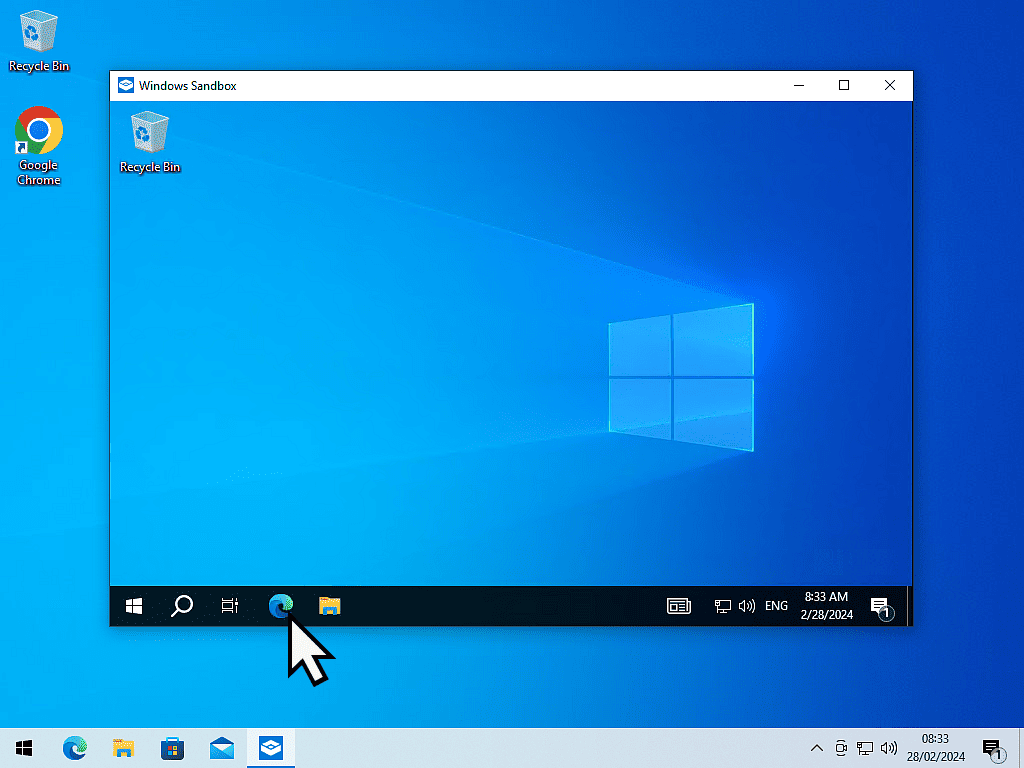
Log In To Your Email Service.
Navigate the Internet to your email service provider (Gmail, Yahoo, Outlook etc) and log in.
You’ll need to provide your username and password. You might also need to authenticate using 2FA if you’ve set that up.
Once you’re logged in to your email account, find the suspicious email.
Because the email is sandboxed, it’s now safe to click the link or open the attachment.
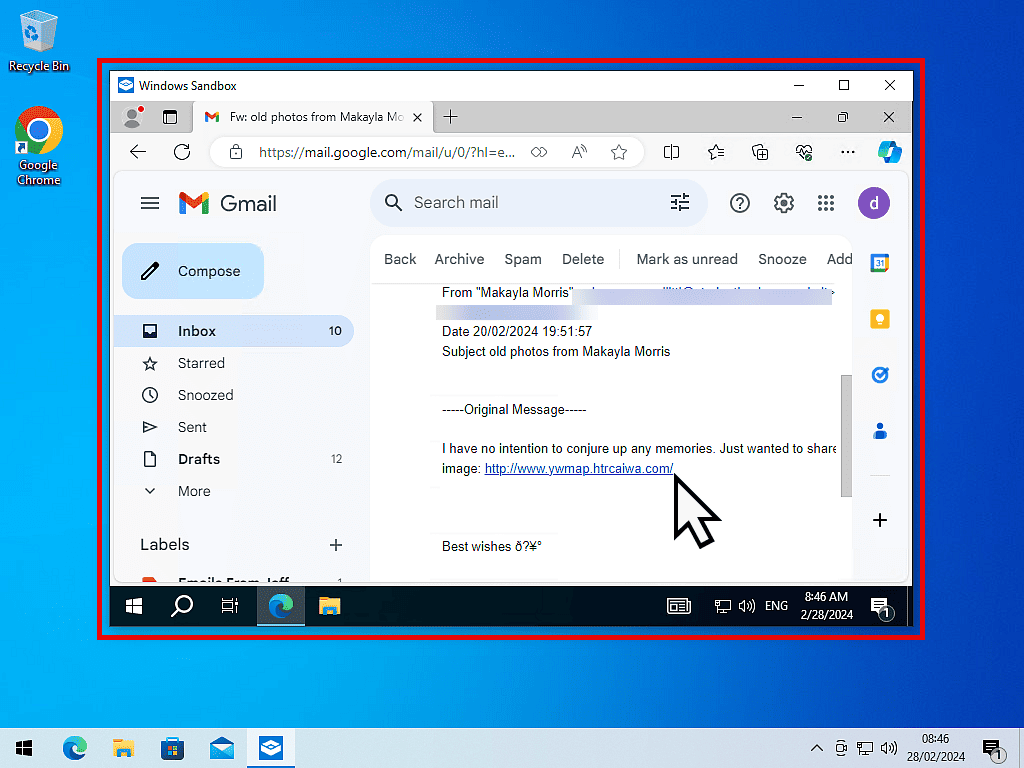
Checking Email In Sandbox.
In this example, clicking the link immediately flags up a warning from Microsoft Defender SmartScreen.
The website that the link in the suspicious email leads to is unsafe. The site could be infected with malware or maybe a fake website used for phishing.
Obviously if you were doing this on your real computer, you’d back out straight away.
But SmartScreen doesn’t know about every unsafe website.
And you can’t rely on your antivirus to protect you from opening infected email attachments.
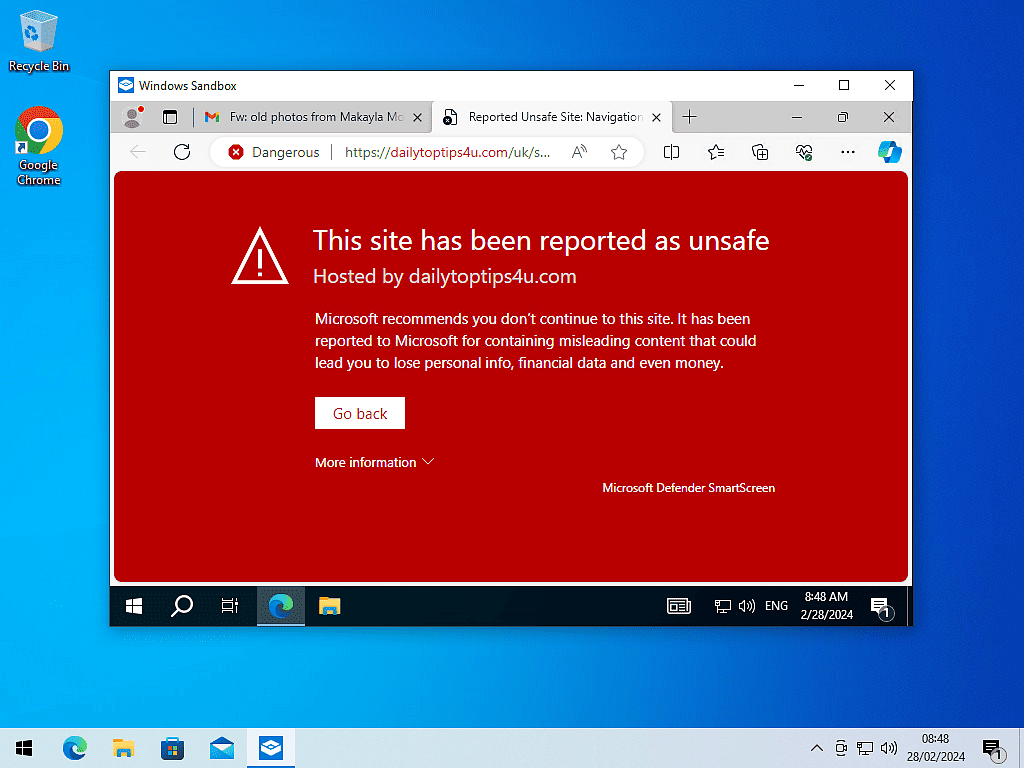
Sandboxed Email.
Even if the Windows Sandbox does become infected. It can’t spread across your real computer. That means that you can safely check any messages that arrive in your Inbox.
Summary.
Each time you start a Windows Sandbox it starts as a completely clean version of Windows. It doesn’t have any of your bookmarks/favourites, nor any saved passwords or logins. It doesn’t have any of your documents, pictures or anything else.
A sandbox is a slimmed down version of Windows that doesn’t have access to any of your data.
For example, if ransomware did get onto your sandbox, there’s nothing for it to encrypt. If an infostealler got installed, there’s nothing for it to steal. And when you close the sandbox, it’s all deleted from your system.
When you close the sandbox, everything is deleted. Nothing is saved. That makes it a good way of safely checking out suspicious email links and attachments.
When you’re working on your home computer and an email comes in that looks suspicious, there’s not usually anyone around to ask. No second opinion. No IT department.
Open the email in a sandbox. If you’ve got Windows Sandbox already setup, it only takes a few moments to launch it.
Related Posts.
Windows Sandbox is free to use and very easy to install. Unfortunately it’s only available to Windows Pro users.
If your PC is running a Windows Home version, then you can’t use the sandbox feature. But all is not lost. You can use a virtual machine. It takes a little more setting up, but I have step by step guides to help.
Windows Sandbox
Setup Windows Sandbox now and have it ready to go when you need it.
How To Use Windows Sandbox To Test Software.
Just as you can check emails, you can also install and run applications in a sandbox.
How To Install Windows 10 Virtual Machine In Workstation Pro.
When you need a more permanent VM solution.
How To Install Windows 11 As A Virtual Machine In Workstation Pro.
Windows 11 can be installed as a VM even if your current system doesn’t meet the requirements.
At Home Computer Guides
Easy to follow step by step computer guides that anyone can do.

